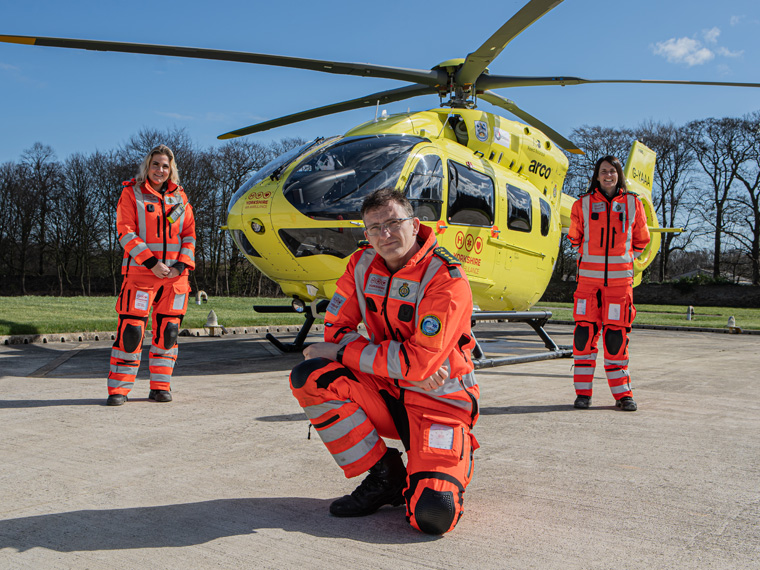When dealing with the most serious major traumas in Yorkshire, time is of the essence and it is paramount that our Critical Care Team can reach our patients in the quickest way possible. Whilst our aircraft can travel up to 149mph and get to anywhere in Yorkshire within a 20-minute time frame, there are some instances where we are limited to, or it is more beneficial to take our rapid response vehicles.
Adverse weather conditions
Our priority is to treat all of our patients in the most efficient manner and also keep our crew and the public safe. Unfortunately, adverse weather conditions can be a health and safety hazard as they can drastically reduce visibility and come with a risk of not being able to take off or land safely. In these situations, our rapid response vehicles ensure that we’re able to get our crew to the scene of an incident on more occasions, and the specialist medical equipment and medicine we carry can make the patient more comfortable and give the patient a better chance of survival. Our Paramedics and Consultants all carry special analgesia and can perform complex roadside procedures that the crew of a land ambulance are unable to.
Aircraft Servicing
As our helicopters can fly up to 3,000ft above the region every single day they must be regularly maintained and in good shape so that they don’t pose a risk to our crew, our patients and the general public in the vicinity we are flying over, ensuring that they are available as often as possible and doing what they do best, getting our live-saving crew and equipment to where they are needed the most. Our helicopters have daily performance checks and are fully serviced annually, which means that at certain points in the year we are limited to one of our helicopters to cover the entirety of Yorkshire. Our rapid response vehicles bridge this gap and enable us to keep the disruption to our operations during these times at a minimum.
Nearby incidents
If an incident happens close to one of our two air bases, sometimes it is more efficient to send out the rapid response vehicle to assess the incident than it is to immediately dispatch our aircraft. Due pre-flight safety checks, it can take time to lift the aircraft. When our Paramedics arrive on the scene and have assessed the patient, a decision can then be made whether they need to be flown to a hospital and we will send out our helicopters.
At the beginning of a shift
Every morning the aircraft has to be fuelled and undergo safety checks before going online and becoming operational. If a call comes through before these safety checks are complete, we could send our rapid response vehicle to enable us to reach the patient as quickly as possible.
Solo Responding
On occasions, we have critical care paramedics, over and above the requirement of the roster, meaning that we may staff the RRV in addition to the aircraft. We often advocate the cars to head into areas of remote/difficult access, as well as inner cities or large areas of motorways to be able to provide an initial response to a critically injured patient.


